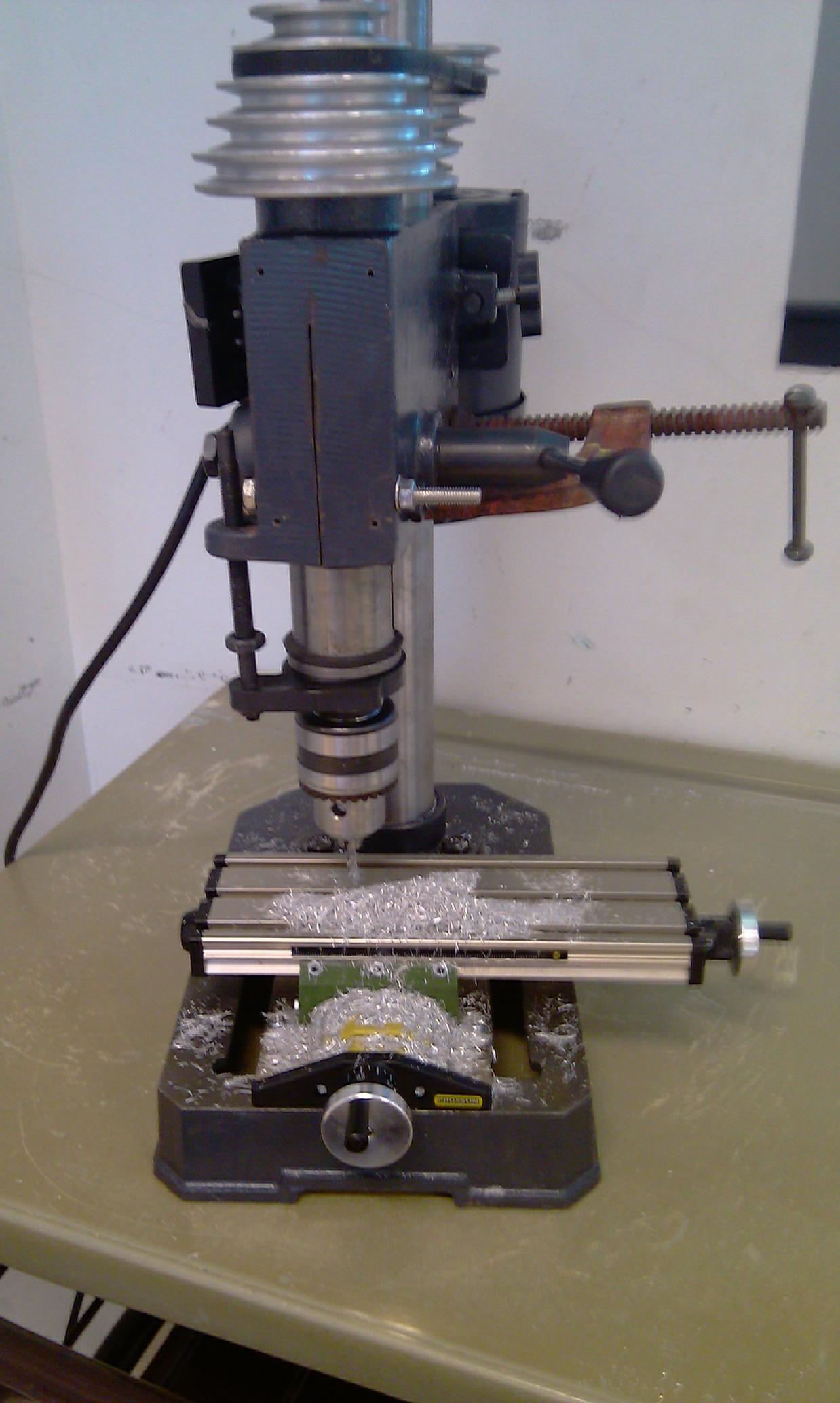Hi all,
When side milling aluminium using a modified drill press, I got this surface finish. The depth of cut was around 7mm, but only 0.03mm was milled on each pass. I used a 4 flute solid carbide 4mm end mill.
Is the poor finish a result of the rigidity of the drill press, too great a depth of cut, a 4 flute instead of 2 flute end mill, etc?
Overall I'm satisfied enough with my drill press conversion as I was not expecting much from the set up, but I would like to improve on the surface finish obtained.
Thanks in advance for the help!
(In the photo, the aluminium block is on it's side, the top surface was the side) <br> <br>
When side milling aluminium using a modified drill press, I got this surface finish. The depth of cut was around 7mm, but only 0.03mm was milled on each pass. I used a 4 flute solid carbide 4mm end mill.
Is the poor finish a result of the rigidity of the drill press, too great a depth of cut, a 4 flute instead of 2 flute end mill, etc?
Overall I'm satisfied enough with my drill press conversion as I was not expecting much from the set up, but I would like to improve on the surface finish obtained.
Thanks in advance for the help!
(In the photo, the aluminium block is on it's side, the top surface was the side) <br> <br>




 After getting a dial indicator, I found that the run out of the drill chuck is around 0.12mm! The run out of the spindle is only 0.01-0.02mm. Guess this is also part of the problem
After getting a dial indicator, I found that the run out of the drill chuck is around 0.12mm! The run out of the spindle is only 0.01-0.02mm. Guess this is also part of the problem


Comment